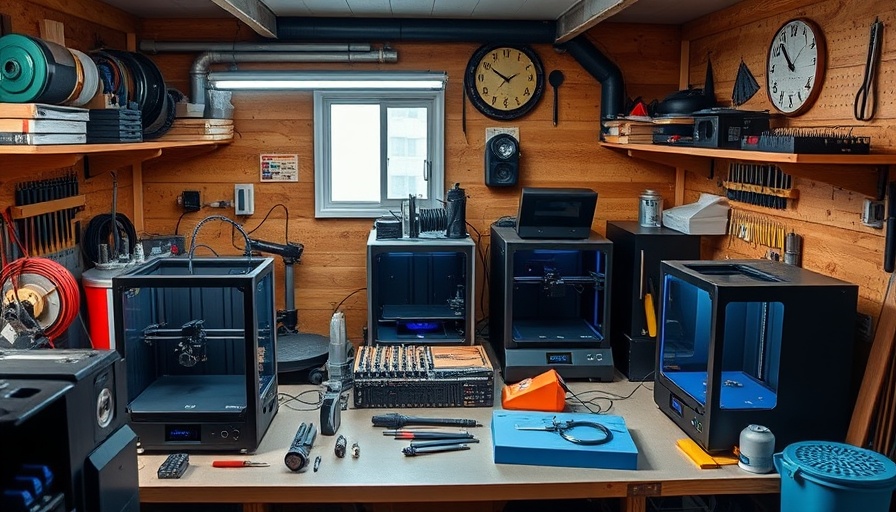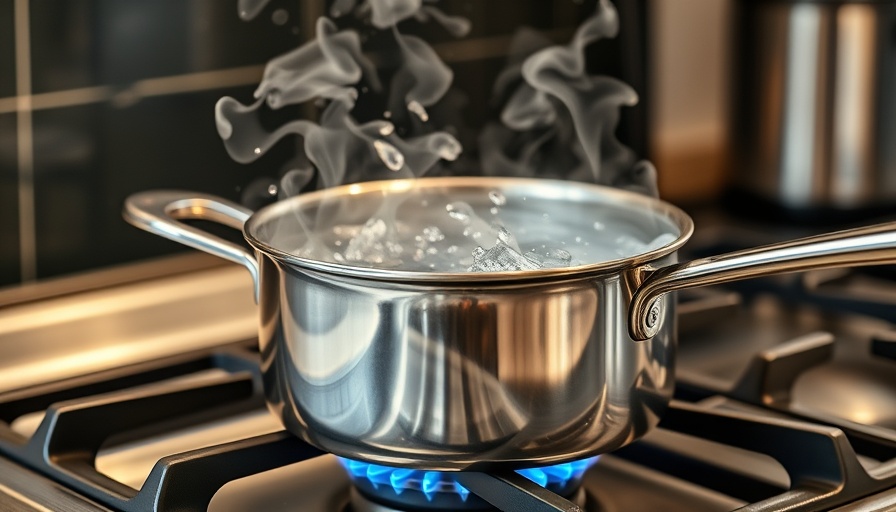
Unlocking the Full Potential of Your 3D Printing Experience
For enthusiasts of 3D printing, environments play a critical role in ensuring the quality and safety of the printing process. In particular, resin 3D printing, which utilizes UV light to cure resin layer by layer, requires an enclosure to mitigate hazards, enhance performance, and provide a clean workspace. A DIY approach to building your own 3D printer enclosure not only addresses these needs but provides an opportunity for customization and innovation.
Why a 3D Printer Enclosure is Essential
Dedicated enclosures create a controlled environment perfect for 3D printers. Resin fumes can emit harmful volatile organic compounds (VOCs), making well-ventilated spaces non-negotiable for safety. An enclosure helps contain these fumes, ensuring a healthier workspace for users. Additionally, resin is sensitive to UV light, which can prematurely cure the resin. By blocking UV rays, an enclosure guarantees that the printing process remains unaffected, ensuring the consistency of your prints. Moreover, temperature control provided by these setups can enhance print quality, as resins perform better at specific temperatures.
A DIY Build for Your Resining Needs
The process of creating a DIY 3D printer enclosure can be made easier by leveraging readily available materials. For example, an old IKEA Kallax shelving unit provides an excellent base to house your printer while allowing for organized storage of materials. As noted by a DIYer, using a grow tent can offer sufficient space and ventilation—similar to designs featured in other popular builds like Mack DIY's resin printer enclosure.
For effective construction, it’s crucial to identify a suitable spot in your home or workshop, ensuring that it is well-ventilated while minimizing exposure to sunlight. Here’s a step-by-step approach to creating your own enclosure:
- Gather Materials: A combination of plywood, MDF, or even acrylic panels can serve well. Add ventilation fans and filters where necessary.
- Assemble Your Enclosure: Allocate proper dimensions based on the equipment size. Ensure that the build allows for additional storage underneath to keep supplies organized.
- Implement Ventilation: Use ducts and an exhaust fan for proper ventilation to manage fumes effectively — essential for any workspace.
- Install Additional Features: Consider integrating LED lighting for better visibility or an insulation layer for maintaining temperatures.
Ventilation Systems: Safety and Efficiency
Ventilation is key in any enclosure design. Depending on the size of your setup, consider constructing either an exhaust port through a window or using specialized systems designed for this purpose. An innovative approach found in existing projects—like Mack’s Hobby Shop’s detailed guide—includes extending existing exhaust units to ensure efficient dispersal of fumes. Some DIY enthusiasts use a modified window exhaust that directly aligns with their enclosure, mimicking ventilation systems commonly used in other home craft projects.
Comparison of DIY and Commercial Enclosures
While there are numerous commercial enclosures available that promise efficacy and ease of use, they often come with high price tags. DIY options, such as those using grow tents or IKEA shelving, allow for more customization. However, it’s crucial to balance the pros and cons—commercial setups often guarantee specific safety features like built-in UV protection, making them worth the investment for some users.
Harnessing Community Knowledge: Resources and Inspiration
Numerous resources can provide inspiration and practical tips for your DIY enclosure project. Websites, forums, and communities dedicated to 3D printing provide ample insights on various materials suited for enclosures, maintenance tips, and advanced modification techniques.
Future Trends in 3D Printing Enclosures
As technology advances, the market for 3D printers and accessories is likely to expand dramatically. Future enclosures may incorporate smart sensors for monitoring air quality, temperature, and humidity, making it easier to ensure optimal printing conditions. Additionally, integrating filtration systems capable of eliminating more harmful compounds will enhance safety. As trends continue to evolve, staying informed will allow you to adapt and upgrade your printing setups accordingly.
Encouragement to Innovate
Whether you’re a hobbyist or a professional looking to refine your workspace, understanding the importance of a 3D printer enclosure can elevate your printing endeavors. Crafting your own enclosure does not just mitigate hazards; it also opens a realm of customization opportunities that could transform your 3D printing experience.
 Add Row
Add Row  Add
Add 




Write A Comment